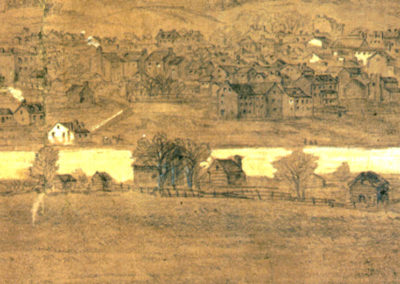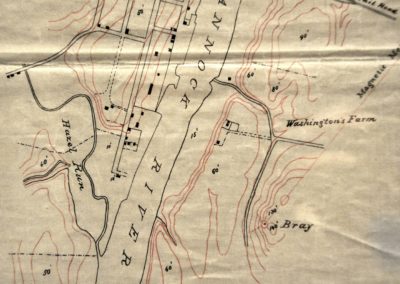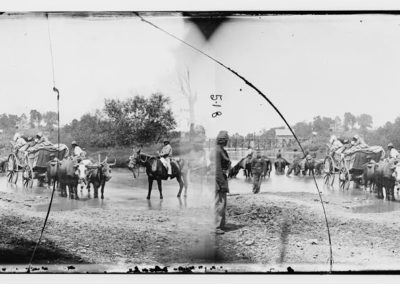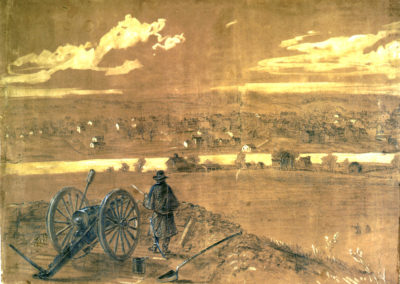Civil War at Ferry Farm
1862 – The Civil War comes to Fredericksburg and Ferry Farm
On two separate campaigns in 1862, Union forces occupied the north bank of the Rappahannock River, including Ferry Farm. The first occupation employed the Union Army’s strategy of ‘peaceful’ occupation while the second employed ‘hard war,’ resulting in a devastating impact on the built and natural environment of the farm.
In April 1862, the Army of the Rappahannock, under the command of Major General Irvin McDowell, arrived in Fredericksburg. His objective was to take control of the town. This move was intended to help protect Washington, D.C., while the main body of the Union Army pushed toward Richmond. McDowell’s forward cavalry encountered, and defeated, the Confederate forces defending Fredericksburg. In retreat, the Confederates burned the two foot-traffic bridges spanning the Rappahannock, as well as a vital railroad bridge. The Mayor of Fredericksburg surrendered the city to the Union Army.
The Federals established their encampments on the north side of the Rappahannock, including the land at Ferry Farm, and set about the task of re-erecting the destroyed bridges. Once the bridges were in place, enslaved men, women, and children from the region liberated themselves and headed toward freedom in the north. Ferry Farm’s enslaved inhabitants joined the exodus.
The Union soldiers encamped at Ferry Farm enforced the occupation of Fredericksburg. Their officers ordered them to respect people and property, and the men – for the most part – followed their command. Still, locals complained bitterly to Federal authorities about barnyards, raided livestock, hay stolen for bedding, and fences dismantled for firewood.
Federal regiments hailing from New York, Wisconsin, and Massachusetts spent the spring and summer at Ferry Farm.
In August, Union General John Pope recalled Fredericksburg’s occupiers to defend Washington. They left behind a landscape largely intact with Ferry Farm’s buildings still standing.
Four months later, Union General Ambrose Burnside brought the largest number of Federal troops ever amassed to the north bank of the Rappahannock. His plan was to cross the river and march victoriously on to Richmond. But he delayed his army’s crossing waiting for pontoon boats. This gave General Robert E. Lee time to fully entrench his Army of Northern Virginia on the opposite side of the river. Burnside’s delay set the stage for a fierce battle, which devastated Fredericksburg and ended in a staggering Union defeat. Badly mauled, the Federals withdrew, pulled up their pontoon bridges, and hunkered down for the winter, turning Ferry Farm into part of their defensive front line.
The Union Army that arrived for battle in November was far different from the modest occupying force that had spent the summer here. Battle-hardened and irritated by a string of defeats, these soldiers cared little for local concerns about property. Burnside’s men did not hesitate to take whatever they wanted. When they were done, only dirt remained at Ferry Farm.
Union forces maintained possession of Ferry Farm for the rest of the war.






